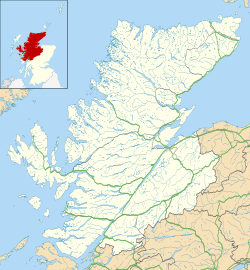Rhue
| |
|---|---|
 | |
Location within the Highland council area | |
| OS grid reference | NH099972 |
| Council area | |
| Country | Scotland |
| Sovereign state | United Kingdom |
| Post town | Ullapool |
| Postcode district | IV26 2 |
| Police | Scotland |
| Fire | Scottish |
| Ambulance | Scottish |
Rhue (An Rubha in Gaelic) is a small settlement north of Ullapool in Ross and Cromarty, and is in the Scottish council area of Highland, Scotland.
